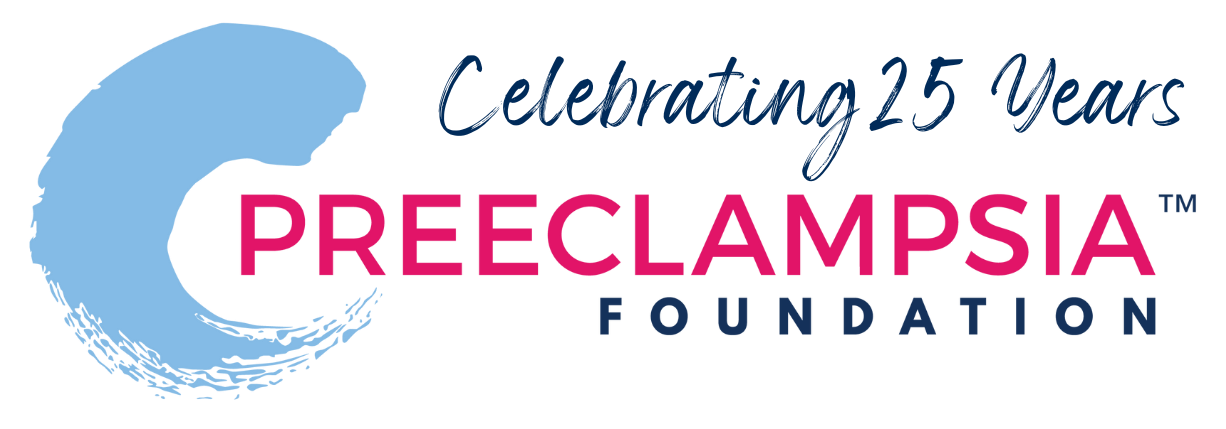
Progesterone injections and preeclampsia
Question: Progesterone supplementation - first trimester and beyond - can it help the vascular constriction by keeping the smooth muscle relaxed (17HP shots), and is it associated with early supplementation (body got used to it and then you take higher levels away?)
Our "Ask An Expert" Answer: Researchers have been interested in whether progesterone affects preeclampsia for a few decades. Pregnant women sometimes inject a form of progesterone known as 17HP (17-hydroxyprogesterone) when there is evidence that it will lower the risks associated with threatened miscarriage, preterm labor, or fertility treatments like in-vitro fertilisation (IVF). But there’s nothing clear about whether this use affects preeclampsia risk, because like many pregnancy research topics, there are not enough large trials to say anything for certain. So the short answer is: no one knows the answer to this question.
But there are a few things we do know. First, there’s the Cochrane Review of Studies into this relationship, which was last updated in 2006. It says that there are only two prior trials, too small for conclusions about preeclampsia risk to be drawn. The reviewers suggest that unless there’s some new reason to think that progesterone lowers preeclampsia risk, it is unlikely that more trials will be conducted.
But in the fourteen years since this was published, researchers have continued to examine the relationship between preeclampsia and progesterone when it is used for other conditions. For example, research looking at women with poorly functioning placentas often measures progesterone levels. Part of the reason it’s hard to say if progesterone might help is that the studies find that preeclamptic women both do, and do not, have altered blood levels of progesterone - and both those things can’t be true at the same time. Some of these studies suggest that although women with hypertensive pregnancies and women with normal pregnancies have similar levels of progesterone during the third trimester, preeclamptic women had higher levels of a specific compound part of progesterone (called a “metabolite”) known as 20α-dihydroprogesterone. Higher levels of this compound were also seen in women who gave birth to small-for-gestational-age (SGA) babies. That suggests that these women who have placental issues leading to smaller babies may have progesterone levels that look the same as women with normal pregnancies, but that the hormone breaks down differently in the bloodstream. One reason for that may be that placentas with interuterine growth restriction do not develop normal progesterone receptors. That means they are not using progesterone the same way as women with normal pregnancies, even if they have the same levels in their bloodstreams. Since women with preeclampsia and with SGA babies are likely to share similar placental changes, this may explain why both show the same pattern. Another possibility is that bloodstream levels of estrogen and progesterone are lower in women with preeclampsia or IUGR than in normal pregnancies, in which case the other studies finding similar levels might be drawing blood during a different gestational stage, or might be wrong. In this study, in addition to measuring levels in women’s bloodstreams, placental cells from women with preeclampsia were compared to the cells from women with normal pregnancies. The preeclamptic placental cells produced lower levels of progesterone. If a woman’s body produces less progesterone, and/or also does not use it normally, during parts of pregnancy, this could create differences later in the pregnancy.
An additional challenge is that even when the research showed that progesterone levels were lower, they were not different enough to use to learn useful things about which women’s condition would worsen rapidly and which women who might have more mild complications. Right now, we can’t make a diagnostic or a screening test from this information.
Another possibility is that preeclampsia may turn off or block progesterone receptors in the placenta. This also means that the placenta would not be able to make use of the progesterone in a woman’s body in the same way a healthy placenta would.
Investigating these mechanisms in rats has also led to some interesting findings. In rats that have reduced uterine perfusion - or less bloodflow to the uterus than normal - 17HP seems to change the way the placenta interacts with the maternal immune system. The immune system changes in some ways during normal pregnancy to allow the placenta to grow, keeping the mother’s body from responding to the baby and the placenta as a foreign organ. Progesterone shots might affect this immune response.
Some preeclampsia research uses rats that can have the bloodflow to the uterus reduced to mimic human preeclampsia. These model rats can then be treated with possible therapies to see if anything changes. When the rats are given progesterone, their levels of hypertension, proteinuria, and placental abnormalities look more like normal pregnancies.
These questions are also beginning to be studied in small pilot trials in human women; one is currently looking at whether progesterone used in expectantly managed early-onset preeclampsia has any effect on the pregnancies.
There are also some intriguing findings in humans treated with progesterone for other conditions. One study found that women doing IVF with their first pregnancy and who were treated with dydrogesterone, which is a form of progesterone supplementation taken by mouth in the first trimester, had lower rates of gestational hypertension. This may suggest that the progesterone promoted the development of a healthy placenta during the first weeks of pregnancy.
If you are pregnant and on progesterone for a proven medical reason, there are a few takeaways related to progesterone and preeclampsia. First of all, it does not seem to be harmful or increase your risk of developing preeclampsia. Secondly, no one knows whether it helps to prevent preeclampsia. Finally, since there has not been much study in humans, your care providers will not likely place you on progesterone unless there is some other reason to do so.
ASK AN EXPERT This article is a response to research questions submitted by Preeclampsia Registry participants. If you have a research idea or question, enroll in the registry or login and select "Submit a Research Question" from your registry home page.
About Caryn Rogers Senior Science Writer
 Caryn Rogers is the Senior Science Writer at the Preeclampsia Foundation. As a community moderator, she has dedicated 15 years to creating clear, understandable explanations of the science underpinning preeclampsia so that women can use this knowledge to protect their own interests. Published in the Journal of Medicine and Philosophy and in Pregnancy Hypertension, Caryn uses her experience with philosophy of evolutionary medicine to support the Preeclampsia Foundation's mission. She developed preeclampsia with severe features at 33 weeks in 2002. After a week in the NICU, her son recovered well. Her daughter was born at 39 weeks after a normotensive pregnancy.
Caryn Rogers is the Senior Science Writer at the Preeclampsia Foundation. As a community moderator, she has dedicated 15 years to creating clear, understandable explanations of the science underpinning preeclampsia so that women can use this knowledge to protect their own interests. Published in the Journal of Medicine and Philosophy and in Pregnancy Hypertension, Caryn uses her experience with philosophy of evolutionary medicine to support the Preeclampsia Foundation's mission. She developed preeclampsia with severe features at 33 weeks in 2002. After a week in the NICU, her son recovered well. Her daughter was born at 39 weeks after a normotensive pregnancy.
Related Articles

Ánimo y cuídate: la preeclampsia puede estar asociada con enfermedades cardíacas y accidentes cerebrovasculares más adelante en la vida Descargue nuestra hoja informativa

Eclampsia is a very serious complication of preeclampsia characterized by one or more seizures during pregnancy or in the postpartum period.

Your story is needed to improve outcomes for moms like you. Add your voice to critical preeclampsia research to ensure that every story is heard.

La preeclampsia, en todas sus formas, puede requerir muchos análisis, tanto durante como después del embarazo. ¿Alguna vez se preguntó por qué el proveedor de atención médica le solicita tantos anális...

Melbourne, FL – October 7, 2025 – The Preeclampsia Foundation launched two new educational resources to help expectant moms and their providers better understand the growing field of predi...

Melbourne, FL – September 17 , 2024 – The Preeclampsia Foundation, in partnership with the International Society for the Study of Hypertension in Pregnancy (ISSHP) and Society for Ma...

Resultados de varios estudios apoyan la hipótesis de que el estrés causado por un embarazo y parto traumáticos puede en muchas ocasiones anular la habilidad de salir adelante emoc...

Is there a connection between maternal diet and preeclampsia? The PRECISE Network research team and I recently completed an evidence review to compile information on maternal nutritional factors that...

What you’ll learn in this article: Many risk factors contribute to an individual’s chance of getting preeclampsia. These risk factors may be genetic, physical, environmental, and even s...

